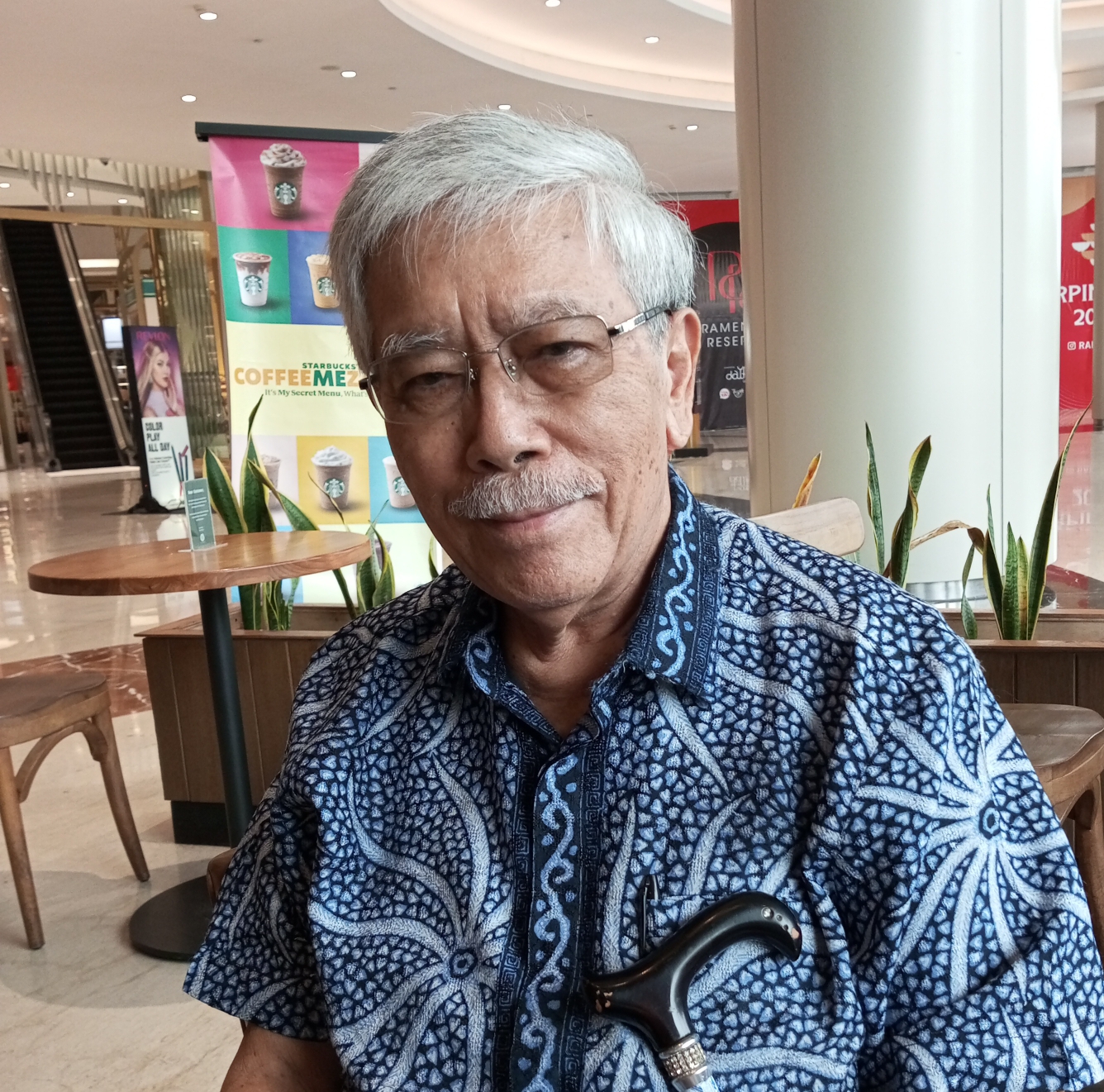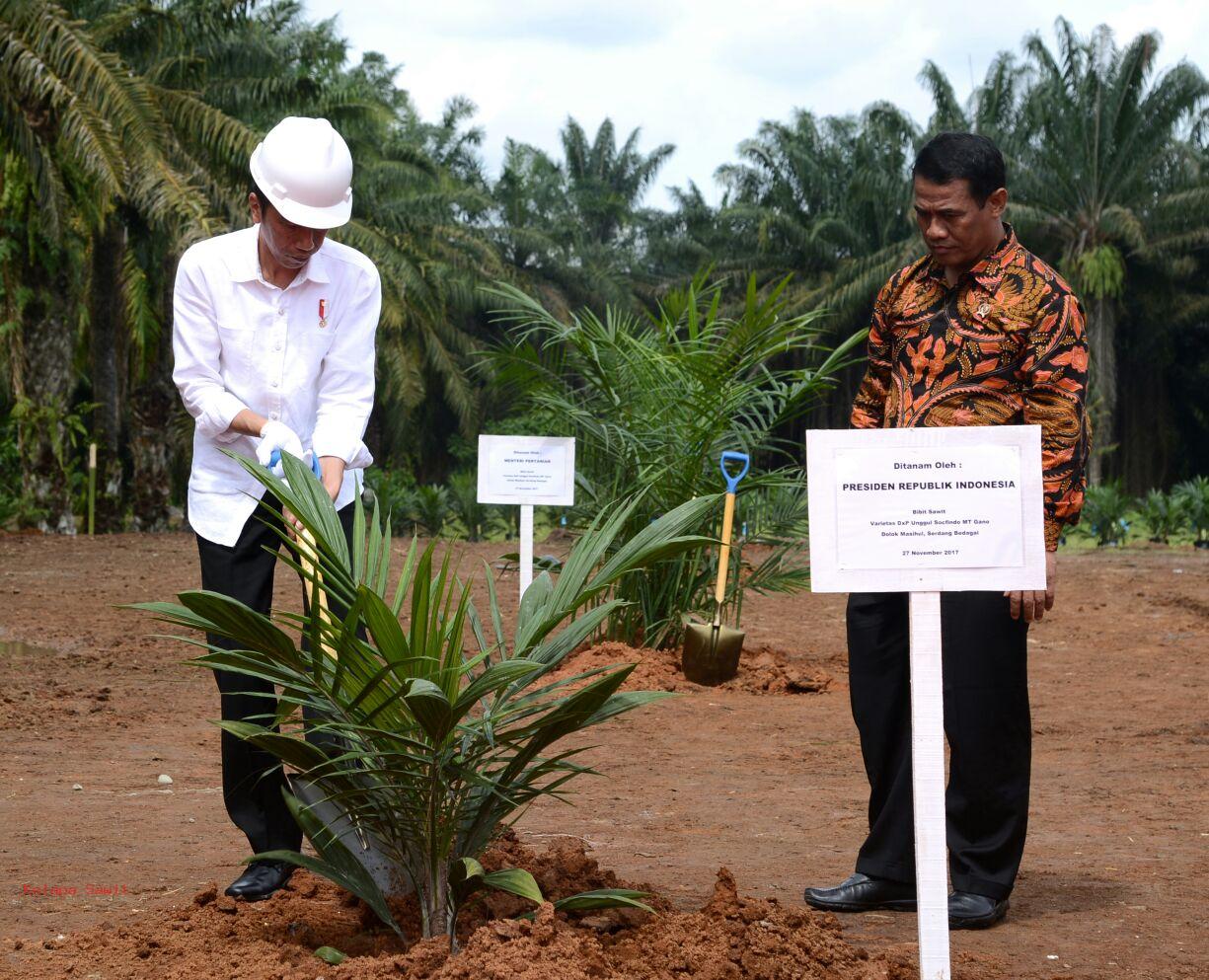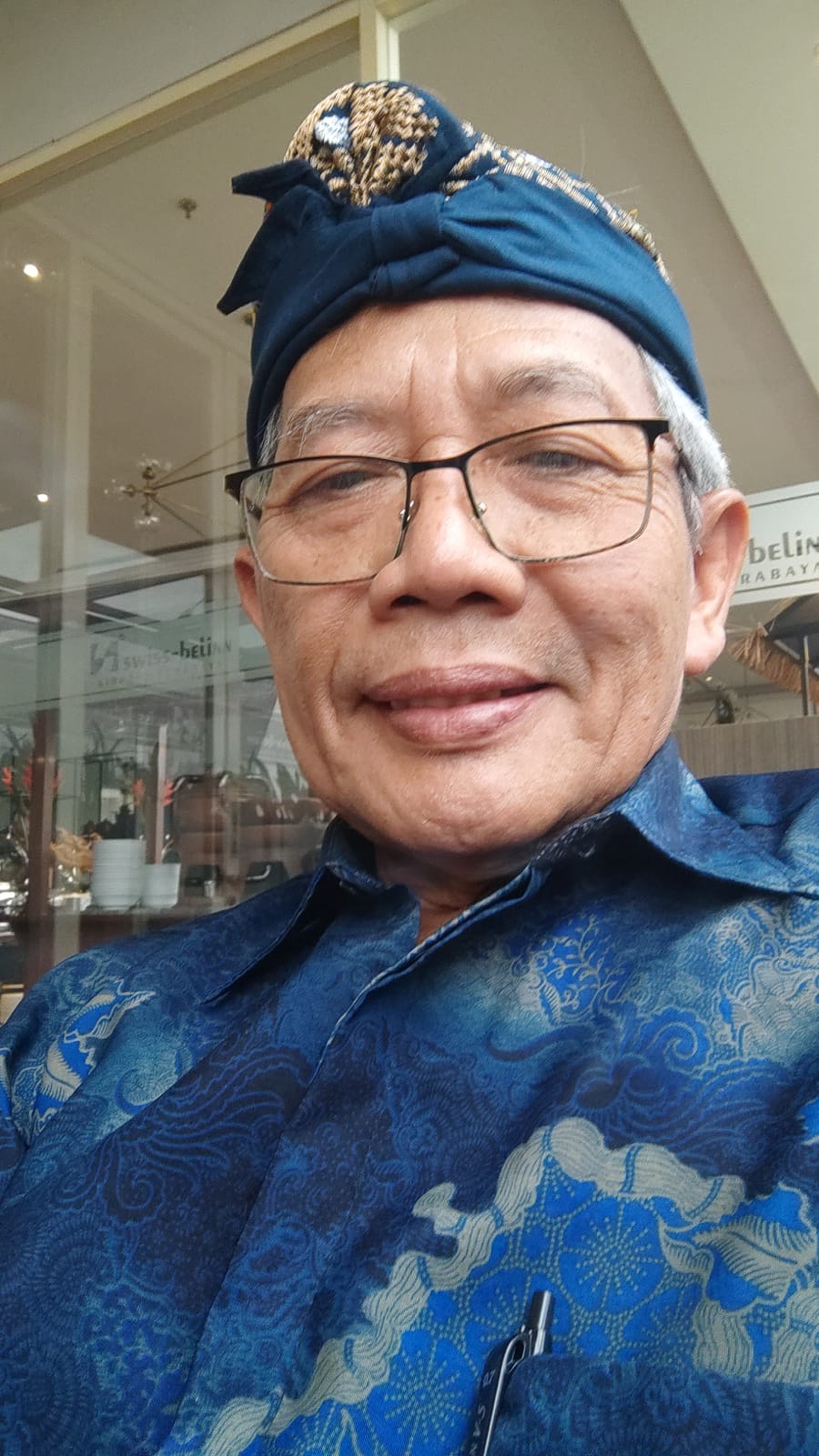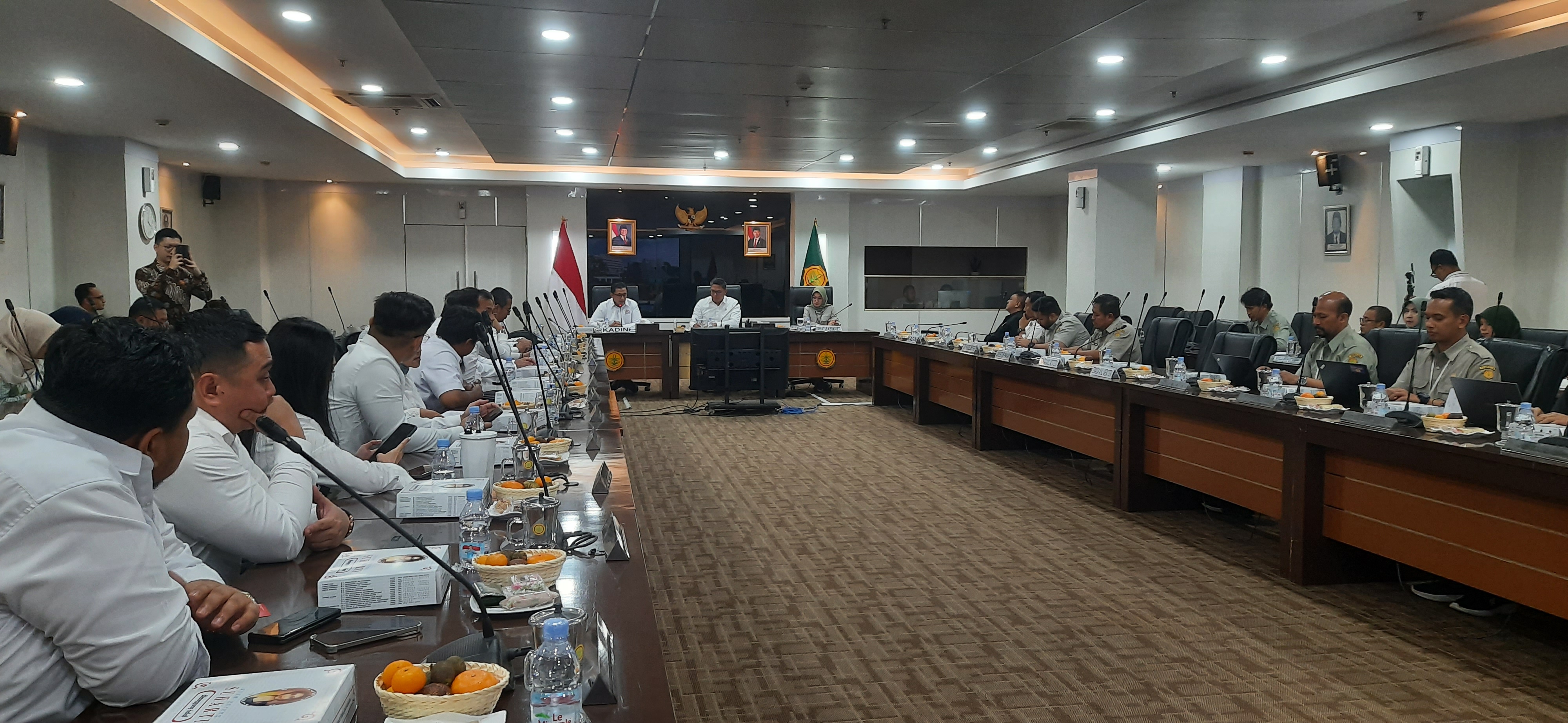"Palm oil industries have major role in Indonesian economic sector. The sector is contributing national income, employing 3.7 million of family heads, triggering agribusiness sector and developing many areas across the country," Prof. Dr. Ir. Bungaran Saragih, M.Ec., the Agriculture Minister during 2000 to 2004, told AGRINA in an interview.
What is your opinion on the types of management of the Indonesian palm oil and its development?
There are three types of the management of palm oil plantation in the country, including the state-owned plantation, private-owned plantation and plantation belonging to farmers. At present, the country has more than 7 million hectares of palm oil plantation, with farmers contributing some 46.32 percent of total palm oil plantation by owning 3.3 million hectares. Then it is followed by private sectors, contributing 43 percent, and the state-owned plantation contributes only 10.7 percent to the total plantationís area. If we looked back in 1979, the farmers only owned 3,125 hectares or only some 1.2 percent of the total palm oil plantation across the country.
During 1911 to 1989, the development of palm oil industries was relatively slow. It took 80 years to increase the area of the plantation into one million hectare, with the state-owned plantation had major role. The condition, however, has changed during the last 20 years, starting 1990 to 2009. The plantation grows in a dramatic figure from previously only 1.13 million hectares into 7.13 million hectares. In average, to date, it only required three years to add one hectares of palm oil plantation.
Considering the condition, we, indeed, are unaware that it was the plantation belonging to the farmer, which grows in a tremendous way. In 1979, total palm oil area owned by the farmers was only 3,125 hectares, and in 1989 it grew up into 223,832 hectares. In 1999 the plantation broadened to 1.04 million hectares and until 2009 the plantation was developed to 3.3 million hectares. Based on the data, the farmersí plantation has sky rocketed with additional 2 million hectares within the last ten years.
The condition showed us that the plantations belonging to the farmers are able to grow with a very limited contribution from the government, and mostly without supports from banking sector.
The same condition goes to the crude palm oil (CPO) output produced by farmers' plantation. The CPO output during 1979 was only 760 tons and increase to 183,689 tons in 1989. Then, in 1999 it rose to 1.55 million tons and is expected to jump into 6.31 million tons this year. The rapid growth without public awareness, however, has caused lack of study on the palm oil run by the farmers, leading the government to form regulation on palm oil sectors without giving any consideration on farmers' plantation.
What's triggering the massive growth of the plantation?
The high demand on CPO, both from international and domestic markets, has caused massive expansion in the palm oil plantation. In average, the annual demand for CPO in international market grows 8.25 percent annually, while domestic demand increases 7.65 percent annually. It's important to notice, the amount of down-stream industry in the sector also increases.
To date, some 72.8 percent of total palm oil plantations are located in
How about the government policy on the expansion of the palm oil plantation in
The plantation belonging to farmers showed a phenomenal development, both in the widening area and its contribution to
The government's policy in introducing PIR program is one of many factors, which triggered plantation growth. The policy also brought impact to the development of private-owned plantation during 1990 to 1999. The fact that individual farmers' plantation grow 34.9 percent in average annually is very phenomenal, far away from the national average growth at 11.9 percent annually.
Considering the fact, it is not out of proportion when I say the future of Indonesian palm oil is in farmers' hand. For sure, this requires support and good management and the government's regulation and program. A mutual cooperation must be developed between farmersí plantation and state-owned plantation. For example, the farmers' plantation could focus themselves in on farm agriculture sector, while private plantation should improve downstream and upstream agribusiness sectors and services for agribusiness specifically in palm oil processing industries.
***
Why can farmers plantation contribute significantly to palm oil industry?
Of the total plantation belonging to farmers, some 25 percent were managed in a nucleus system (PIR), while the remaining 75 percent or about 2.29 million hectares owned by individual farmers. Generally, the area of plantation belonging to farmers contributes some 46.32 percent of the national plantation area. While for CPO, they contribute 35.62 percent of the national output. Farmers' plantation also shows its contribution to the development of palm oil agribusiness in
Aside, it also contributes the state income and reduces poverty rate by employing local residents. There is 1.3 million of palm oil farmers across the country, with 69.2 percent of them are individual farmer and 30.8 percent are integrated with private company. It also has important role to the development of regional economic, especially in some palm oil producersí provinces.
How big its chance in the future?
The plantation belonging to farmers has large chance to become major actor in the
The domestic market will be wide open both for industrial and consumers good. Meanwhile international market can be reached by certifying farmersí plantation in a midterm. What's more, I believe the international critics will continuously reduce along with the increase of farmers' welfare by managing the plantation. Increasing of palm oil productivity by improving on farm sector will also lead to the efficiency in using and opening land.
Aside, the chance to improve quality and productivity will give them chance to gain more value from their products. The procedure to expand the plantation for most farmers is relatively simple and does not require any complicated license. Therefore, total 26 million hectares of potential land for palm oil plantation will be managed quickly by the farmers. They also have chance to build some processing factories joined in an association or cooperative.
And what are challenges for farmersí plantation?
Low productivity is the major challenge that must be faced by most farmers. They mostly only produce 2.39 tons per hectare. This is far below its potency to produce 4 tons of CPO per hectare, as it is produced by state-owned and private-owned plantations. The low productivity is really weak point causing low competitiveness of farmersí plantation.
In a short time, farmersí plantation will still be able to fulfill domestic demand. Thus, however, we really need to cope with the low productivity starting now.
Nevertheless, the demand on palm oil in international market is expected to remain high, especially for food oil and fats. The role of palm oil in international market will be more important if we relate it to the use of palm oil for bio-fuel as an alternative energy. It will be more strategic sector for our country, since starting three years ago
The condition will impact positively to the domestic industry, putting farmers and their plantation into more strategic position. Therefore, improving farmer competitiveness should become an important agenda, along with the institution strengthening. Farmers guidance must be done to answer the challenge to fulfill standard quality according to international market, and to increase farmer position through the development of downstream industry.
It means the strengthening of farmers competitiveness can be done by modernizing or improving quality and productivity. And not less important is forming institution, whether in form of association, cooperation and others.
***
What is the impact of the widening of palm oil plantation to the forest?
I can say that the development of palm oil plantation is only being done at the farm land and converted forest. It is impossible to get license to develop the plantation in the forest area. However, sometimes in several biodiversities such as plants and animal can be found in the converted forest.
Aside, the plantation must also be developed in line with regulations on sustainable development. Considering the fact, I can not say that the rapid growth of palm oil plantation has become major cause in triggering deforestation in the country. Recently, our forest indeed received many destruction mostly caused by illegal logging, forest fire and large-scale mining.
However, we must admit that sometimes palm oil plantation also enter forest area because of wrong license. Sometimes it also does not follow the sustainable regulation, such as by opening access from the plantation into forest area. However, those are cases, and can not become general image of plantation in the country.
So, whatís triggering the accusation?
I supposed the accusation on the lack of sustainable palm oil and the deforestation is triggered by tough competition in vegetable oil market. Palm oil is the most superior plant among other plants including soybean, rapeseed and sunflower in producing oil per hectare and time. If previously they said palm oil was not healthy enough for food, which in fact it could not be proven, not they said that it is damaging tropical forest and has been developed unsustainably.
Aside damaging forests how Orangutan lover see our plantation?
Since 1979, there had been lots of problems related to Orangutan such as being traded illegally, illegal logging and forest fire. At the time, total palm oil plantation was only 380 hectares and only existed in
I donít know how of the Borneo Orangutan Survival (BOS) Foundation and other Orangutan lovers in pursuing many people in developed country to love the animal. In their eyes, rapid growth of palm oil plantation has direct impact in adding Orangutanís suffer. Iím not totally agreed with the opinion; therefore I have to travel around the world to explain them that it is not true.
Black campaign against our palm oil has been occurring since long time ago. Earlier, it was the producers of soybean, rapeseed and sunflower told us that palm oil is not bring any health benefits. Then the environmentalists said that it is suffering Orangutans. They also often threaten us to boycott our palm oil products.
How do we cope with this issue?
We need a self correction. We need to develop sustainable palm oil plantation, whether it is required or not by the market. The development of sustainable palm oil plantation is a must. Therefore we need a forum such as the Roundtable of Sustainable Palm Oil (RSPO). Therefore, donít take the RSPO for granted although we only produced 1 million tons of certified CPO of totally 17 million tons of the exported CPO.
I, as the chairman of BOS organization, would like to cooperate with palm oil stake holders to give input to manage the plantation sustainable. If the plantation was opened and managed in line with sustainable aspects, it will surely be done by paying attention to nature preservation and its flora and fauna. If we save Orangutans, which spend most of its life upon the trees, we will also save many floras and faunas living in its habitat.
And without cooperation, the BOS organization, government or palm oil players surely can not save Orangutans. The Orangutans can only be saved with cooperation among the non-government organizations, local residents, government, and players in palm oil business. I hereby call government and palm oil players to cooperate to save Orangutan through a sustainable palm oil plantation. Therefore, RSPO will be more important in the future.***






























